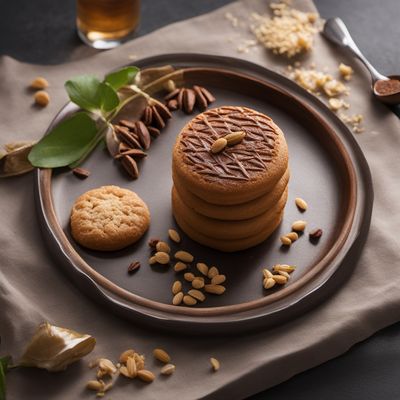
Ingredient
Bitter chocolate
The Dark Delight: Bitter Chocolate
Bitter chocolate is made by grinding roasted cocoa beans into a paste, which is then solidified and molded into bars or blocks. It has a deep, dark color and a strong, robust flavor with subtle notes of bitterness. The texture of bitter chocolate is firm and smooth, allowing it to be easily melted and incorporated into various recipes. It is commonly used in baking, confectionery, and savory dishes to add depth and complexity to the final product.
Origins and history
The history of chocolate dates back thousands of years to ancient Mesoamerican civilizations, where cocoa beans were highly valued and used in ceremonial rituals. Bitter chocolate, in its unsweetened form, was the original chocolate consumed by these civilizations. Over time, chocolate-making techniques evolved, and sugar was added to create sweeter varieties. Bitter chocolate remains a staple in baking and culinary traditions, appreciated for its intense flavor and versatility.
Nutritional information
Bitter chocolate is low in sugar and contains a higher percentage of cocoa solids compared to other chocolate varieties. It is a good source of antioxidants, fiber, and minerals such as iron and magnesium. However, due to its high cocoa content, it is also higher in fat and calories compared to milk or sweetened chocolate. Moderation is key when consuming bitter chocolate.
Allergens
Bitter chocolate may contain traces of milk, soy, or nuts, depending on the manufacturing process and potential cross-contamination. It is important to check the packaging or contact the manufacturer for allergen information if there are any concerns or dietary restrictions.
How to select
When selecting bitter chocolate, look for high-quality brands that use premium cocoa beans and minimal additives. Check the percentage of cocoa solids indicated on the packaging, as higher percentages generally indicate a more intense and bitter flavor. Opt for bars or blocks that are well-sealed and free from any signs of moisture or bloom, which can affect the texture and taste of the chocolate.
Storage recommendations
To maintain the quality and flavor of bitter chocolate, store it in a cool, dry place away from direct sunlight and strong odors. It is best to wrap the chocolate tightly in foil or plastic wrap to prevent moisture absorption and the development of off-flavors. If stored properly, bitter chocolate can last for several months without significant changes in taste or texture.
How to produce
Bitter chocolate is produced by chocolate manufacturers using specialized equipment and processes. It requires roasting and grinding cocoa beans to create the chocolate liquor, which is then processed to separate cocoa solids from cocoa butter. As an amateur, it is not feasible to produce bitter chocolate at home due to the complex and labor-intensive nature of the process. However, one can experiment with homemade chocolate-based recipes using high-quality cocoa powder or semi-sweet chocolate as alternatives.
Preparation tips
Bitter chocolate can be used in various culinary applications. It is commonly used in baking to make rich and decadent desserts such as brownies, cakes, cookies, and truffles. Bitter chocolate can also be melted and used as a coating for fruits, nuts, or confections. In savory cooking, it can be incorporated into sauces, stews, or mole dishes to add depth and complexity. Additionally, bitter chocolate can be grated or shaved to garnish desserts or hot beverages.
Culinary uses
Bitter chocolate is widely used in both sweet and savory culinary creations. It is a key ingredient in classic desserts such as chocolate mousse, flourless chocolate cake, or chocolate ganache. Bitter chocolate is also a popular choice for making hot chocolate or indulgent chocolate beverages. In savory cooking, it is used in Mexican cuisine for dishes like mole poblano or as a secret ingredient in chili con carne to enhance the flavor profile.
Availability
Bitter chocolate is commonly available in supermarkets, specialty food stores, and online retailers worldwide. It is a staple ingredient in many countries and is widely used in both home kitchens and professional settings.
More ingredients from this category
Recipes using Bitter chocolate

Toledo-style Partridge with Chocolate
Savory Delight: Toledo-style Partridge with a Chocolate Twist

Torta Setteveli - Seven Veils Cake
Decadent Delight: The Irresistible Seven Veils Cake

Canarian Chocolate Cake
Tropical Delight Chocolate Cake

Lolly Cake with a Latin American Chinese Twist
Choco-Mango Lolly Cake: A Fusion Delight of Latin American and Chinese Flavors

Faroese-Inspired Slow-Cooked Lamb Rendang
Hearty Faroese Lamb Rendang: A Fusion of Flavors

New Nordic Sillsalat with a Twist
Nordic Delight: A Modern Twist on Sillsalat

Padang-style Punschkrapfen
Spicy and Sweet Delight: Padang-style Punschkrapfen
